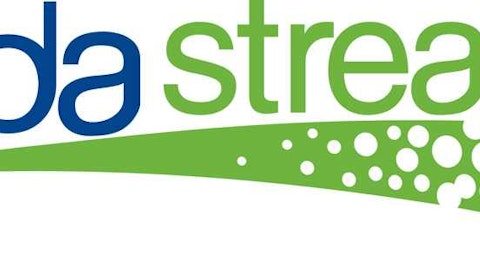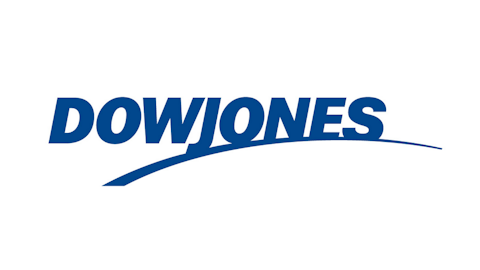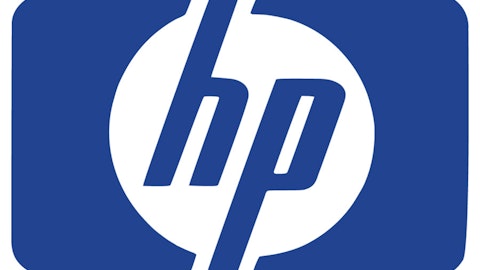Move over, Superman: There’s a more unstoppable force that can leap even the highest expectations, and its name is the Dow Jones Industrial Average. America’s most iconic stock market index comprising 30 of its most globally diverse companies is up an astonishing 16.4% year to date and hasn’t seen a down month since October.
Plenty of factors are working in the Dow’s favor, such as record-low lending rates that are spurring business lending and home purchases, as well as an improving unemployment rate and slow-but-steady growth in the manufacturing sector.
While your initial thought might be that this rally is long overdue for a correction, short-sellers have wisely avoided certain companies within the Dow Jones Industrial Average. Today I propose we look at these so-called most-loved stocks of the Dow, discover what makes them so universally shunned by short-sellers, and determine whether current shareholders have anything to worry about.
| Company | Short Interest As a % of Shares Outstanding |
|---|---|
| Merck (NYSE:MRK) | 0.76% |
| Coca-Cola (NYSE:KO) | 0.77% |
| Pfizer (NYSE:PFE) | 0.78% |
| United Technologies (NYSE:UTX) | 0.80% |
| Wal-Mart | 0.82% |
Source: S&P Capital IQ.
Merck & Co., Inc. (NYSE:MRK)
Why are short-sellers avoiding Merck & Co., Inc. (NYSE:MRK)?
Merck & Co., Inc. (NYSE:MRK) jumped to the top of the least short-sold list after not even appearing on it last month likely because of its strong clinical data reported at the American Society of Clinical Oncology’s annual meeting. A new class of immunotherapy drugs known as PD-1 inhibitors are the hottest thing in the biotech sector, and Merck & Co., Inc. (NYSE:MRK)’s Lambrolizumab delivered an impressive 38% overall response rate in early-stage results for advanced melanoma. With patent expirations not stinging its bottom line as much as expected, Merck & Co., Inc. (NYSE:MRK) is certainly wowing existing shareholders.
Do investors have a reason to worry?
There is no such thing as a reason not to worry when it comes to owning a pharmaceutical company, because patent protection periods are for only a finite period of time. Luckily for Merck, it has fracture-preventing osteoporosis drug Odanacatib slated to be filed for new drug approval next year, and it has the potential to deliver up to $3 billion in sales, according to the Street’s estimates. Although growth prospects might be tempered over the coming years for Merck, it’ll still deliver strong cash flow and a solid dividend, which doesn’t make it a particularly convincing short-sale candidate.
The Coca-Cola Company (NYSE:KO)
Why are short-sellers avoiding The Coca-Cola Company (NYSE:KO)?
I’m still trying to figure out how The Coca-Cola Company (NYSE:KO) got bumped from its top spot this month, or any other month for that matter. The Coca-Cola Company (NYSE:KO) operates in all but two countries worldwide, giving it what is essentially unparalleled geographic diversity. The company offers everything from high-growth energy drinks to slow-but-steady brand-name growth with its traditional sparkling beverage lines. It’s no wonder that research firm Interbrand anointed The Coca-Cola Company (NYSE:KO) as its most valuable brand in the world for 2013.

Source: KB35, Flickr.
Do investors have a reason to worry?
Only if they’re planning to try to make a quick buck on Coca-Cola over the short term. Of course, no stock is going to go up forever, and even Coca-Cola could run into slower growth in developed regions such as Western Europe and the U.S. in the short run. However, there’s still a moat of opportunity in emerging-market nations for Coca-Cola to grow, and it boasts incredible pricing power over its peers. Simply put, with 51 straight annual dividend increases under its belt, why would you ever bet against Coca-Cola?
Pfizer Inc. (NYSE:PFE)
Why are short-sellers avoiding Pfizer?
Just as we saw with Merck, big pharmaceutical companies often provide big dividends, huge margins, and steady cash flow, which make them poor short-sale candidates. Short-sellers have even less reason to bet against Pfizer Inc. (NYSE:PFE), with blood-thinning drug Eliquis, which is co-developed with Bristol Myers Squibb Co. (NYSE:BMY), being approved by the Food and Drug Administration in late December. Eliquis has multibillion-dollar potential.
Do investors have a reason to worry?
Yet again, it depends on what your investing timeframe is. For short-term investors, Pfizer may cause shareholders fits, with Lipitor’s expiration still stinging and blockbuster pain drug Celebrex due to lose patent exclusivity in December 2015 after a one-and-a-half-year extension in March. Over the long run, Eliquis and Pfizer’s remaining pipeline may prove more than enough to continue to pump out steady profits, and short-sellers would be wise to keep their distance.
United Technologies Corporation (NYSE:UTX)
Why are short-sellers avoiding United Technologies Corporation (NYSE:UTX)?
Despite serving the building and aerospace industries, which are quite prone to hiccups related to lower government spending, United Technologies silenced pessimists in the first quarter by reporting an adjusted EPS increase of 16% and reaffirming its full-year EPS outlook. What weakness had been expected in the U.S. appears to be more than made up by growth in its equipment orders aboard — especially in China.
Do investors have a reason to worry?
United Technologies is more of a macroeconomic global play than anything else. Unless we see a rapid deterioration in Europe’s economy, or we see China’s GDP break into the 5% GDP growth range (about half its 30-year average growth rate), then shareholders probably don’t have too much to worry about. Keep an eye on growth rates in China, as they’ll probably dictate where United Technologies heads next.
Wal-Mart Stores, Inc. (NYSE:WMT)
Why are short-sellers avoiding Wal-Mart Stores, Inc. (NYSE:WMT)?
The thesis for why pessimists avoid Wal-Mart is relatively simple: It’s the largest retail chain in the world, and it commands incredible pricing power that can squash a good chunk of its competitors. Wal-Mart provides investors with predictable cash flow stemming from the fact that more than half of its revenue comes from the grocery aisle. As a one-stop-shop for nearly everything, it certainly doesn’t offer short-sellers a compelling reason to bet against it.
Do investors have a reason to worry?
This might be the one case among these five companies where investors should be showing signs of concern. Wal-Mart may the “low-price leader,” but even it is having trouble with higher payroll taxes and delayed tax refunds because of IRS furloughs eating into its bottom line. Wal-Mart is a good indicator for retail sales in our economy, and its 1.4% same-store sales decline in its latest quarter may not bode well for the retailer in the interim. Wal-Mart isn’t particularly expensive at 13 times forward earnings, but its revenue growth rate of 4% certainly leaves a lot to be desired.
Which most loved Dow Jones component do you think has the best chance at moving decisively lower? Share your thoughts in the comments section below.
The article The Dow’s 5 Most Loved Stocks originally appeared on Fool.com and is written by Sean Williams.
Fool contributor Sean Williams has no material interest in any companies mentioned in this article. You can follow him on CAPS under the screen name TMFUltraLong, track every pick he makes under the screen name TrackUltraLong, and check him out on Twitter, where he goes by the handle @TMFUltraLong.The Motley Fool recommends Coca-Cola.
Copyright © 1995 – 2013 The Motley Fool, LLC. All rights reserved. The Motley Fool has a disclosure policy.





